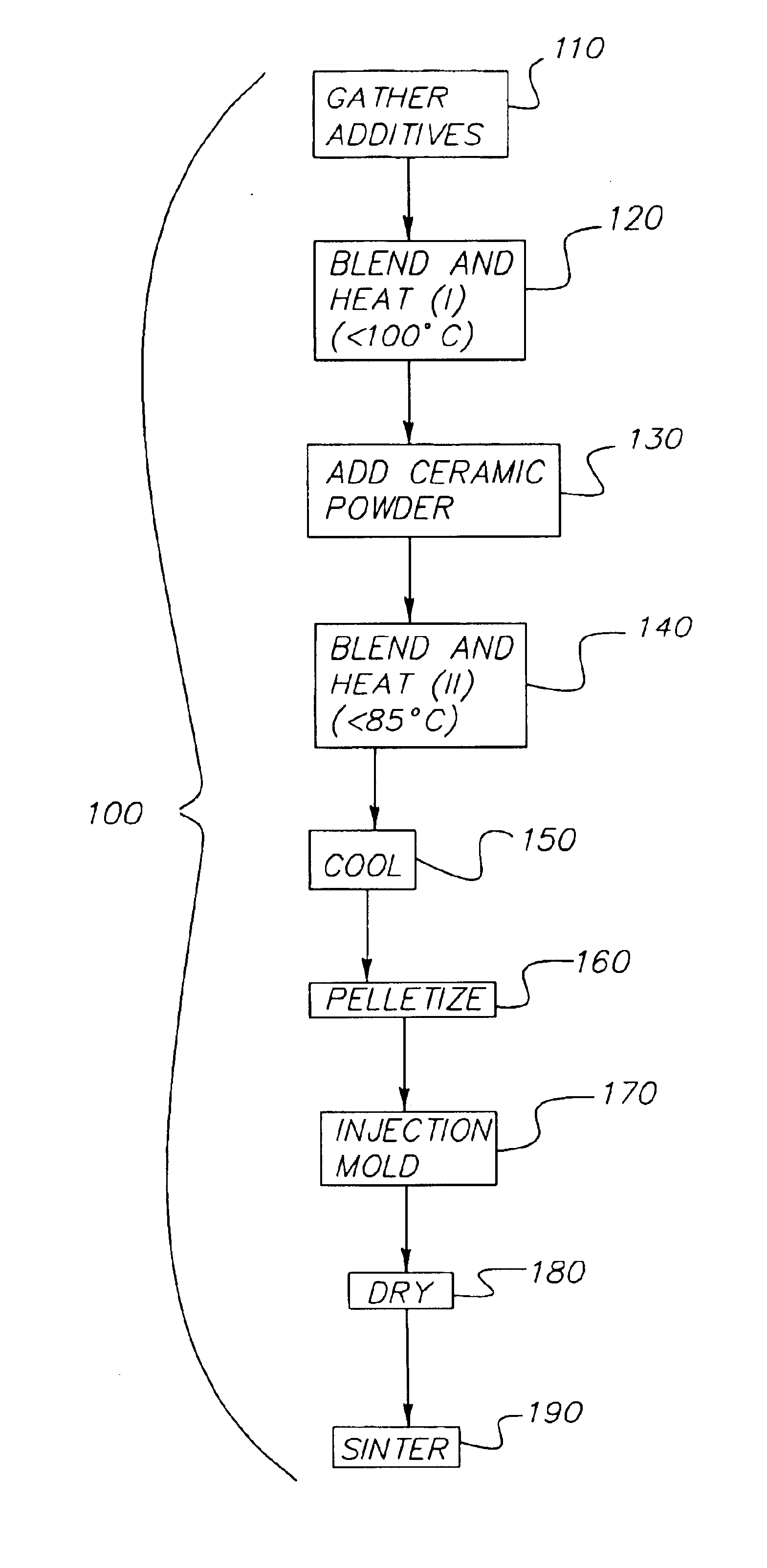Injection molding of ceramic powders using non-gel forming water soluble organic binders
a technology of ceramic powder and organic binders, which is applied in the field of injection molding of inorganic powders and molding compositions, can solve the problems of high volume manufacturing processes for these materials using conventional dry pressing, gel casting or cold isostatic pressing, and the production of complex shapes using the above processes is difficult, and the production of powders comprising sub-micron particles, such as y-tzp, poses many manufacturing problems. , to achieve the effect of cost-effectiveness and cost-effectiv
- Summary
- Abstract
- Description
- Claims
- Application Information
AI Technical Summary
Benefits of technology
Problems solved by technology
Method used
Image
Examples
working examples
1. Zirconia powder alloyed with yttria (3 mole %) were mixed with a non-gel forming water soluble binder system to form a slurry. The following compounding formulation was used to make up the feedstock for the injection molding process:
3000 g Y-TZP powder 60 gpoly(ethylene oxide), M.W. (molecular weight) 900,000 30 gpolyvinylalcohol, M.W. 115,000 60 gpolystyrene sulfonate, M.W. 70,000 30 ghydroxypropyl cellulose, M.W 60,000 60 gstearic acid 60 ccn-propyl oleate 60 ccdiisononyl adipate 20 ccMenhaden fish oil1200 ccdistilled water
The inorganic particles, Y-TZP, have an average particle size that can range from 0.2 to 0.5 μm. The binder system includes primary binders such as poly(ethylene oxide), polyvinyl-alcohol, polystyrene sulfonate, and hydroxypropyl cellulose. The weight fraction of high molecular weight to low molecular weight primary binders is 0.5. The primary binders are mixed with plasticizers n-propyl oleate and diisnonyl adipate, and processing aids, such as stearic acid...
PUM
| Property | Measurement | Unit |
|---|---|---|
| particle size | aaaaa | aaaaa |
| particle size | aaaaa | aaaaa |
| temperature | aaaaa | aaaaa |
Abstract
Description
Claims
Application Information
 Login to View More
Login to View More - R&D
- Intellectual Property
- Life Sciences
- Materials
- Tech Scout
- Unparalleled Data Quality
- Higher Quality Content
- 60% Fewer Hallucinations
Browse by: Latest US Patents, China's latest patents, Technical Efficacy Thesaurus, Application Domain, Technology Topic, Popular Technical Reports.
© 2025 PatSnap. All rights reserved.Legal|Privacy policy|Modern Slavery Act Transparency Statement|Sitemap|About US| Contact US: help@patsnap.com


